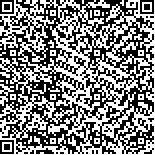| 摘要: |
| 采用原子力显微镜对氨基化玻片及 6 种不同方法修饰玻片进行表面特征分析, 并比较了硝酸纤维素(NC)膜、PVDF 膜以及以上不同修饰玻片对抗体的固定效率、固定效果, 最终选择琼脂糖修饰玻片作为芯片载体。将纯化后的兔抗血清(捕获抗体)点样至琼脂糖修饰玻片上, 制备免疫芯片, 与待检样品(病毒感染的靶器官组织)匀浆液孵育形成复合物, 该复合物被辣根过氧化物酶(HRP)标记的特异性单克隆抗体(单抗)识别, 经底物显色, 得到肉眼可见的检测结果。通过改变芯片制备及应用过程中的具体条件参数, 对各条件进行了优化, 并采用生物素-链亲和素(BAS)标记特异性单抗作为检测抗体以提高检测灵敏度。基于此夹心免疫分析原理制备的 WSSV、LCDV 现场检测免疫芯片, 病毒的最低检出量分别为 82.50 ng/ml、0.88 μg/ml, 在一定的抗原浓度范围内, 病毒浓度的对数值与信号强度呈线性关系; 采用 BAS 放大检测信号后, 病毒的最低检出量为 12.38 ng/ml、0.22 μg/ml。该免疫芯片与酶联免疫吸附法(ELISA)及免疫荧光法(IFAT)对同种样品的检测结果高度一致。
|
| 关键词: 单克隆抗体, 抗体芯片, 白斑综合征病毒, 淋巴囊肿病毒, 琼脂糖凝胶 |
| DOI:10.11693/hyhz201005006006 |
| 分类号: |
| 基金项目:国家高技术研究发展计划(863)课题, 2006AA100306 号; 农业公益性行业科研专项经费项目, 200803012 号 |
|
| DEVELOPMENT AND APPLICATION OF AN ANTIBODY CHIP IN ON-SPOT DETECTION OF AQUATIC ANIMAL VIRUSES |
|
XU Xiao-Li, SHENG Xiu-Zhen, ZHAN Wen-Bin
|
|
Key Laboratory of Mariculture Ministry of Education, Ocean University of China
|
| Abstract: |
| A novel antibody chip based on sandwich immunoassay technique for on-spot detection of white spot syndrome virus (WSSV) and lymphocystis disease virus (LCDV) was developed. Atomic force microscopy was first used to characterize the three-dimensional surface profiles of seven kinds of glass slides. Nitrocellulose membrane, PVDF membrane and different modified glass slides were analyzed with their efficiency and ability to immobilize proteins. Based on these results, agarose gel-coated glass slide was chosen as the appropriate support for the microarray. Purified rabbit antiserum as capture antibody was spotted onto the support in an array format. The antibody microarray was then incubated with the samples (tissue homogenates from specific organs of infected aquatic animals), and the antigen-antibody complexes were detected with corresponding horseradish peroxidase (HRP)-conjugated monoclonal antibodies (MAbs). Results were visualized with naked eye or TMB system. Data were analyzed based on the color intensity of the stained spots and quantified by a quantitative detection system. MAbs labeled with biotin-streptavidin were used as detection antibody to improve the sensitivity of antibody chip. The detection limit of the antibody chip for WSSV and LCDV were 82.50 ng/ml and 0.88 μg/ml, respectively, by HRP-conjugated antibody, 12.38 ng/ml and 0.22 μg/ml, respectively, by biotin-streptavidin detection system. Moreover, high concordance of results of detecting WSSV and LCDV using antibody microarray, enzyme-linked immunosorbent assays, and immunofluorescence assay was obtained.
|
| Key words: Monoclonal antibody, Antibody chip, White spot syndrome virus, Lymphocystis disease virus, Agarose gel |
